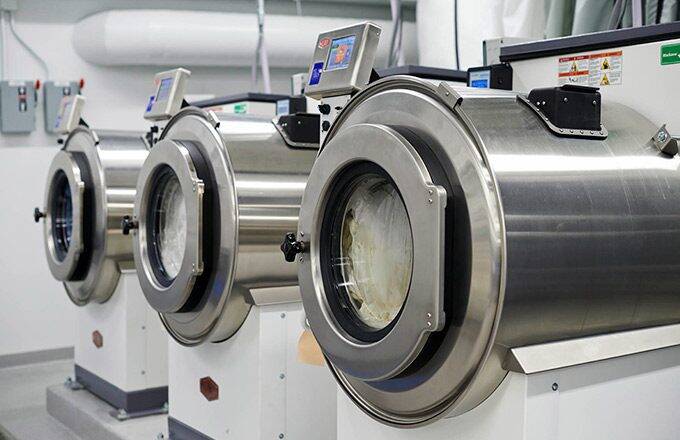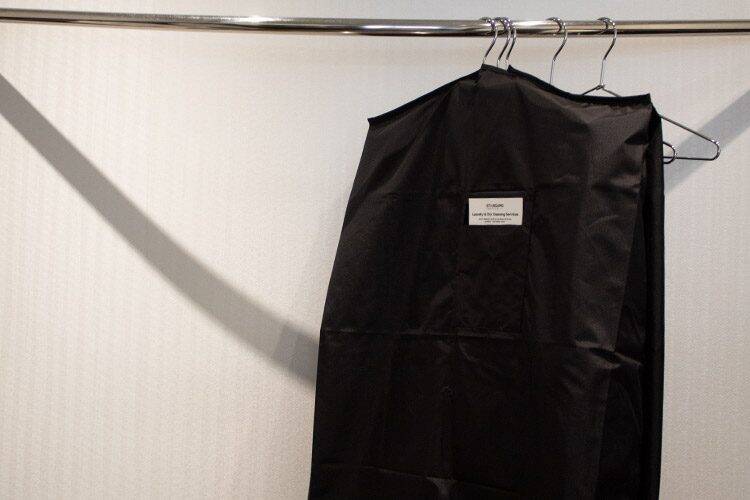March 4, 2020
Laundry’s Dirty Little Secret: Redeposition

This is the third article in our series on laundering best practices. Be sure to check out the other articles: Are These 5 Problems Ruining Your Hotel’s Linens? and 5 Tips to Help Your Hotel Laundry Reduce Wrinkles
Have you noticed your white linens becoming dull and dingy? You could be dealing with one of laundry’s dirty little secrets—redeposition. Sounds scary right? Luckily, it’s easy to deal with. While the name may be new to some, redeposition is an all-too familiar problem that can cause hospitality linen items, especially white sheets and towels, to appear gray or off-color after washing.
So, What Is Redeposition?
As the term implies, it describes when a substance from one linen moves into the wash water and gets “redeposited” onto other textiles, spreading like a laundry flu. And because the offending substance gets dispersed in the wash water, this usually causes a uniform discoloration of all the linens in the wash load.
The Usual Suds-Spects—Some Common Culprits
Depending on the type of redeposition, the root cause and removal will vary. Here are some common causes:
- Soils – In many cases, dirt particulates become embedded in the fibers of the product. The best way to recover items with a telltale “grayish” cast is to re-wash and rinse them in an under-loaded washer to increase mechanical action and water flow. Depending on the amount of soil in the fibers of the product, this process may need to be repeated several times. Typically, chlorine bleach will not have much of an effect on these types of soils, so we don’t recommend using any.
- Dyes – New textiles that are dyed or printed will usually have excessive dyes that are released the first time you wash them, causing an overall shade of the offending dye to spread to other linens. If this happens to you, it is best not to dry the affected items, as this will tend to set the dyes and make them harder to remove. Chlorine bleach is usually effective in recovering these items.
- Iron/Rust – Using water with a high concentration of rust or iron will often result in an overall yellowing of the items. Treatment of the incoming water is the best way to best to resolve this issue. Otherwise, rust removing sours (acids) can be used in the very last bath of the wash cycle to restore or prevent redeposition from occurring. Oxalic acid is the most common, but these are very aggressive chemicals that can reduce the life expectancy of the items being processed, so it’s recommended to fix your water source as soon as possible.
Prevention Is Key: 5 Tips to Prevent Redeposition
Follow these helpful tips to protect your property’s sheets, towels, and other textile items from redeposition and keep them looking their best:
1. Use detergents correctly
Unlike what most people believe, the main role of a detergent is not to “clean” the textiles but to suspend soils liberated by mechanical action and water flow. Suspending soils helps prevent them from redepositing back onto the items being cleaned.
2. Watch your water levels
Low water levels can prevent soils or fugitive dyes from being effectively suspended and flushed away from the load. It is recommended that high water levels be used during the rinsing process.
3. Do not overload washers
An overloaded washer will dramatically inhibit cleaning results and increase the likeliness of redeposition. Loading washers to 80% of rated capacity is recommended.
4. Use caution with freshly dyed material
New textiles that are dyed or printed will have often have excessive dyes present that will be released in the first wash. Wash newly dyed or printed textiles separately, and do not reuse the water.
5. Start with clean water
If the incoming water has a high iron content, it should be treated to remove it.
We understand that redeposition is an everyday frustration in the world of commercial hotel laundries. Using these tried-and-true ways to minimize redeposition, you can extend the life and appearance of your hospitality linen and terry supply.
Related Content

Hotel Laundry 101: How to Keep your Laundry Running Smoothly
Our top tips to keep your hotel laundry running smoothly despite labor shortages and inexperienced staff.

Sustainability and Simplicity with VersaValet™ Laundry and Garment Bag
VersaValet™ is a reusable, hybrid laundry and garment bag that can help hotels eliminate two sources of plastic waste – both single-use plastic laundry and dry-cleaning bags – from their properties.

Common Laundry Mistakes that Can Ruin Hotel Linens
Let’s explore important laundry DON’Ts from our laundry experts that will keep your linens in tip top shape.